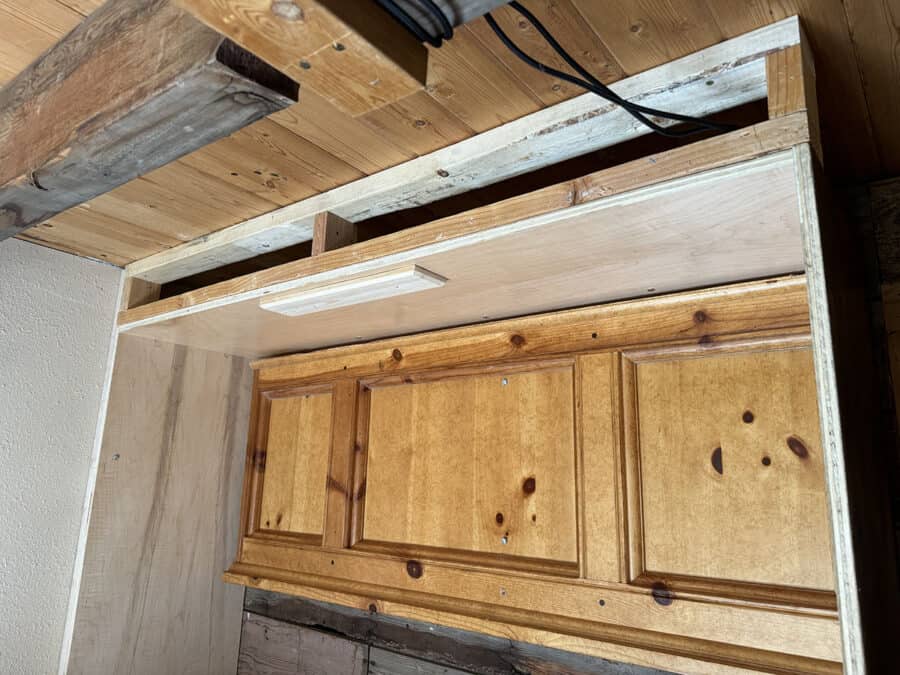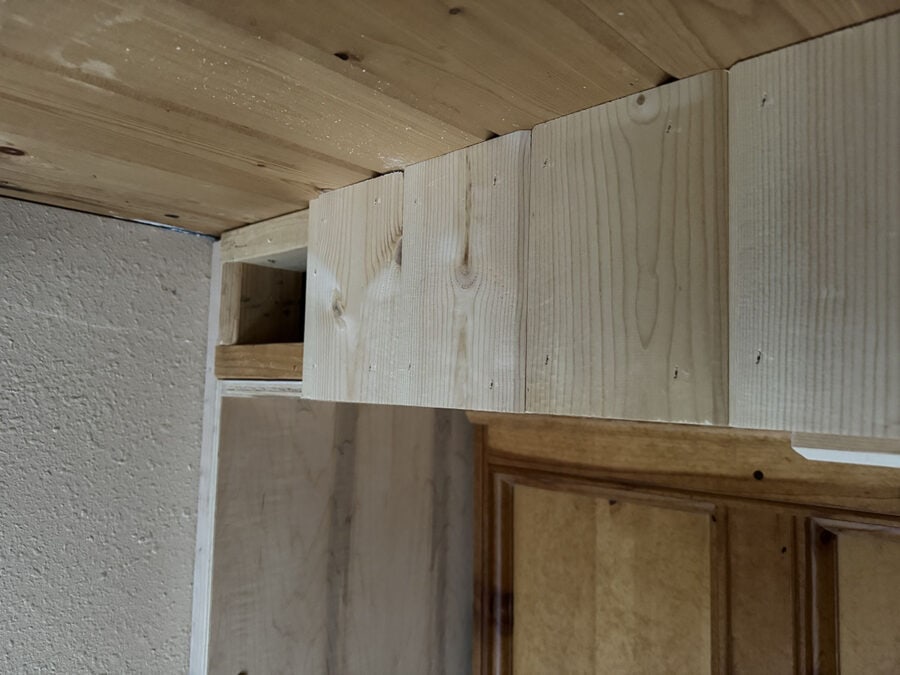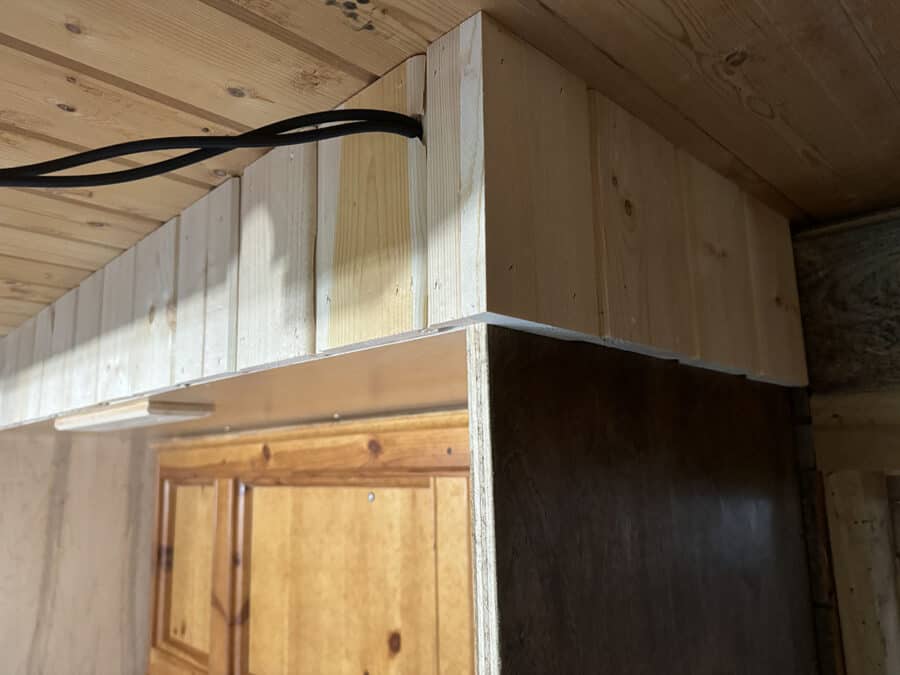When my wife first wanted to look at getting a bed for our small office space at our cabin, I knew I didn’t want it to be a full-time use of the limited space. I had seen Murphy bed’s online before, and quickly started exploring options. The DIY route quickly became the path I wanted to take. Eventually, I came across the Rockler I-Semble Murphy Bed Kit. It caught my eye for a couple of reasons: the cambered wood slats and hydraulic lifters. Unlike other kits that use springs, the hydraulic lifters in the Rockler kit promised smoother operation and greater durability. My primary focus was on getting the bed built so any guests we had over could use it. However, finishing the trim work was always on my to-do list, and now I finally got around to it. Here’s how I transformed my Murphy bed from functional to finished.
The Initial Build: Function Over Form
The Rockler I-Semble Murphy Bed Kit made the construction process straightforward. The cambered wood slats provided excellent support and comfort, while the hydraulic lifters ensured that the bed could be easily opened and closed without much effort. The Rockler Murphy Bed kit comes with all the necessary hardware, you just need to get the plywood you plan to use. If you haven’t already, be sure to check out my original post on How to Build a Murphy Bed.
The gap above the bed and laminated wood ply edges was a constant reminder that the job wasn’t completely done. With all of that out of the way, not it’s time to get this Muprhy bed trimmed out and finished.
Starting the Trim Work: Framing the Gap
The first step in my long-overdue trim project was to address the gap above the Murphy bed. I opted to frame it with 2x4s, which provided a sturdy and reliable base for the trim work. This step made sure that the the trim would have a solid foundation to easily attach to.

- Measuring and Cutting the 2x4s: I measured the dimensions of the gap and cut the 2x4s to fit open area above the frame of the Murphy bed. A quick check with a level and square made sure everything was flush and square.
- Securing the Frame: Using wood screws, I secured the 2x4s in place. This created a solid structure that would provide brad nailing of the tongue and groove pine boards that would come next.
Adding the Tongue and Groove Pine
With the frame in place, it was time to move on to the tongue and groove pine boards. These would cover the exposed frame and give the Murphy bed a more finished and cohesive appearance. The pine slats I used were repurposed from a closet I removed to make room for our racing arcade cabinets in the game loft.
- Cutting the Pine Boards: I measured and cut each board to the correct length, ensuring that they fit snugly together. The tongue and groove design made it easy to create a seamless look. Since the floor in this room wasn’t perfectly square, I did measure each piece one at a time to ensure I had a straight line of boards going across. If I had used the same size, there would have been some “step down” of inconsistency.
- Nailing the Boards: Using a brad nailer, I easily nailed each board into place. The tongue and groove system made alignment quick and easy.

The Finished Look
The trim work closed up the gap above the Murphy bed and gave it a polished, built-in look. The natural wood grain of the pine added warmth and character to the room as it matches the same material used for the ceiling. These trim slats however have not had the same UV exposure and are currently quite a bit lighter. After time, they’ll darken just like the ceiling pieces.
Reflections on the Project
While the initial build was all about functionality, adding the trim has elevated the bed to a central feature in the room. The project wasn’t overly complicated, but the impact of the finished trim is significant. It’s a reminder that sometimes, it’s the small details that make the biggest difference.
If you’re considering building a Murphy bed or have one that’s in need of some finishing touches, I highly recommend investing the time to complete the trim work. Not only does it improve the aesthetic appeal, but it also adds a sense of accomplishment and pride in your DIY project.
Tools and Materials Used:
Here’s a list of the tools and supplies I used for the trim work:
- 2×4 lumber
- Tongue and groove pine boards
- Brad nailer and brad nails
- Wood screws
- Measuring tape
- Miter saw (for cutting 2x4s and pine boards)
- Square
- Level
Tips for a Successful Trim Project:
- Measure Twice, Cut Once: Accurate measurements are crucial for a clean and professional look. If your floor isn’t perfectly level such as mine, be prepared for some shimming and adjustments.
- Take Your Time: Rushing can lead to mistakes. Ensure each piece is level and secure before moving on to the next.
- Use Quality Materials: Investing in good quality wood and fasteners will pay off in the long run.
Wiring
You probably noticed I notched out a section of the slats for wires to pass through. These are the wiring for the hanging pendant lights I used in this room. I’m considering running this wire through a bead blasted metal conduit pipe. That will likely come in the next few months.
Conclusion
I’m sure several of us have unfinished projects, I have many. This is one I was completely focused on getting the core structure and functionality of the bed built, but knew I wouldn’t get back around to finishing it off with trim for a while. It took just over two years for me to get back around to this one, but I’m glad it didn’t take any longer. There can be a lot of time involved in detail work like this, but the end result makes a huge difference from something that can look half done to that completed masterpiece.

